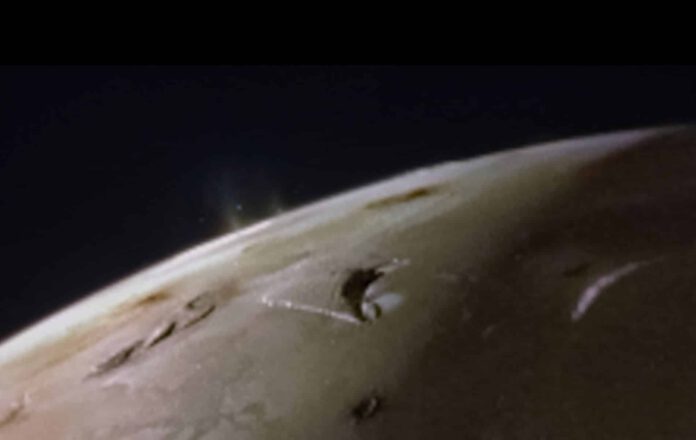
Juno: A Close Encounter with Jupiter’s Moon, Io
Recently, for the second time in quick succession, the space probe Juno swept past Io, one of Jupiter’s moons. This flyby yielded a multitude of photographs, among which one was particularly remarkable.
Volcanic Activity in Visage
The photograph in question clearly showed two quite expansive plumes. According to NASA, these are the result of volcanic activities. The source of the plumes, whether they originate from a single massive volcano or two close-knit volcanoes, is currently being investigated.
Flyby at Close Quarters
The picture featuring the two plumes was captured over the weekend, during Juno’s flyby past Io. During this flyby, the space probe approached the moon to a distance of approximately 1500 kilometers.
The Second Brush with Io
This scenario marked the second flyby past Io in a matter of months. In December, Juno had already flown past the moon at a small distance, yielding fantastic images like the one below.
Purpose of the Flybys
The flybys are intended to gain more knowledge about the volcanic activity on the moon. In particular, researchers aim to determine whether or not there is an ocean of magma beneath the moon’s surface feeding the volcanoes.
Not Juno’s First Encounter with Io’s Volcanic Plumes
Interestingly, this is not the first time that Juno has spotted volcanic plumes on Io. A few years ago, during a flyby past Jupiter, it unexpectedly captured a large plume over the ‘pizza moon’. The plume (which can be seen below) was captured from Jupiter at a distance of about 300,000 kilometers. Thanks to Juno’s recent flyby past Io, we are now able to see these volcanic plumes from a much closer distance; at the time Juno captured these, the probe was only 3800 kilometers away from Io’s surface.
Juno’s Mission
Juno has been orbiting Jupiter since 2016. The primary objective of the mission is to peer beneath the thick cloud cover of Jupiter and provide more insight into the gas giant’s composition, origin, and evolution. However, there has also been significant interest in the moons that the gas giant boasts. Flybys past Ganymede and Europa have been conducted in the past, and Io has also captured Juno’s attention. The latter will continue to be true, as Juno will be flying past the ‘pizza moon’–a nickname given to the moon due to its pock-marked and multicolored appearance–several more times. The distance to the moon will increase, however; during its next flyby, Juno will pass Io at a distance of about 16,500 kilometers. Nonetheless, there is still plenty to see and learn even from a greater distance, so we will undoubtedly hear and see more of pizza moon Io.











